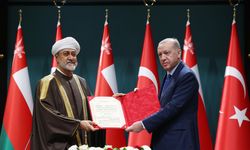The production of the training and reconnaissance aircraft began on June 24, 1923, in İzmir and was completed within a year. However, bureaucratic delays prevented the test flight from receiving official authorization.
Undeterred by the challenges, Vecihi Hürkuş took matters into his own hands and conducted the first flight of Vecihi K-6 on January 28, 1925, at 3:00 PM in Gaziemir.
Constructed using materials salvaged from Greek warplanes captured during the Turkish War of Independence, Vecihi K-6 reached a speed of 200 kilometers per hour during its 15-minute test flight. The successful flight was met with jubilant celebrations by locals and friends who gathered to witness the historic event, capturing photos alongside the groundbreaking aircraft.
Despite the accomplishment, Hürkuş faced repercussions upon returning home. He was fined half of his monthly salary and placed under house arrest for ten days for conducting the flight without official permission.

Vecihi Hürkuş’s Reflections on the First Domestic Aircraft
Vecihi Hürkuş shared the story of this historic flight in the April 1925 issue of Resimli Ay magazine. In an article titled “How I Built the First Turkish Aircraft and How I Was Rewarded,” translated by Nurseli Gürer, Hürkuş recounted his struggle against bureaucracy.Describing his frustration, he likened the delays to watching a terminally ill child without being able to intervene. He had presented technical evidence proving the aircraft’s capabilities to the aviation inspection board but was still denied approval to conduct the test flight.
“I was on the verge of losing my mind from frustration,” he wrote. “The inspection board seemed more concerned about my life than I was, yet I had complete confidence in my aircraft’s success. Why wouldn’t they allow it to be tested? I couldn’t endure the delays anymore. One day, I secretly brought my plane to the field, fueled it, climbed aboard, and took off. As I ascended, I felt my spirit soar. I am certain that even the pioneers of aviation didn’t experience such profound joy.”
His unauthorized flight not only demonstrated the reliability of the Vecihi K-6 but also marked a turning point in the history of Turkish aviation.

“Vecihi K-6 is Türkiye’s First Civil Aircraft”
Bahadır Gürer, President of the Vecihi Hürkuş Museum Association, emphasized the importance of this achievement. “Vecihi K-6 is Türkiye’s first civil aircraft. The journey of domestic civil aviation began immediately after the establishment of the Republic in 1923, with Vecihi Bey’s vision becoming a reality,” he stated.
Gürer explained that the name “Vecihi K-6” reflects its designation as a land-based aircraft and its place as the sixth project designed by Hürkuş. Over the course of his career, Hürkuş worked on 16 aircraft projects, although not all reached production, with some remaining at the design stage.
“Using materials from captured Greek aircraft, Hürkuş sought permission to build the plane and completed it in 1924. However, official approval for the test flight faced lengthy delays, which led him to take independent action. At that time, neither the resources nor the mindset were prepared for such an ambitious project,” Gürer noted.
 Vecihi Hürkuş
Vecihi Hürkuş
A Milestone in Turkish Aviation
On January 28, 1925, Vecihi Hürkuş conducted a successful test flight, executing maneuvers such as acceleration, deceleration, turning, and landing. Gürer described the feat as “a miracle” for the era.
Although the flight was celebrated with great enthusiasm, Hürkuş faced penalties, which led to his resignation from the air force.
Reflecting on the centenary of this historic moment, Gürer stated, “Although this date may not hold global significance, it is a milestone for Türkiye. If we have achieved success in aviation today, it is rooted in the legacy of Vecihi K-6. The courage, sacrifice, and determination displayed 100 years ago deserve to be remembered and honored as the foundation of Turkish aviation.”









